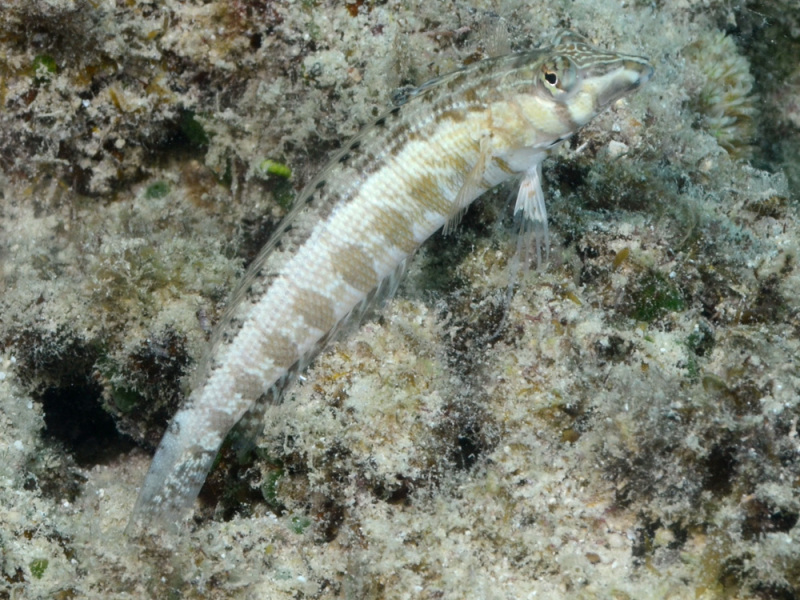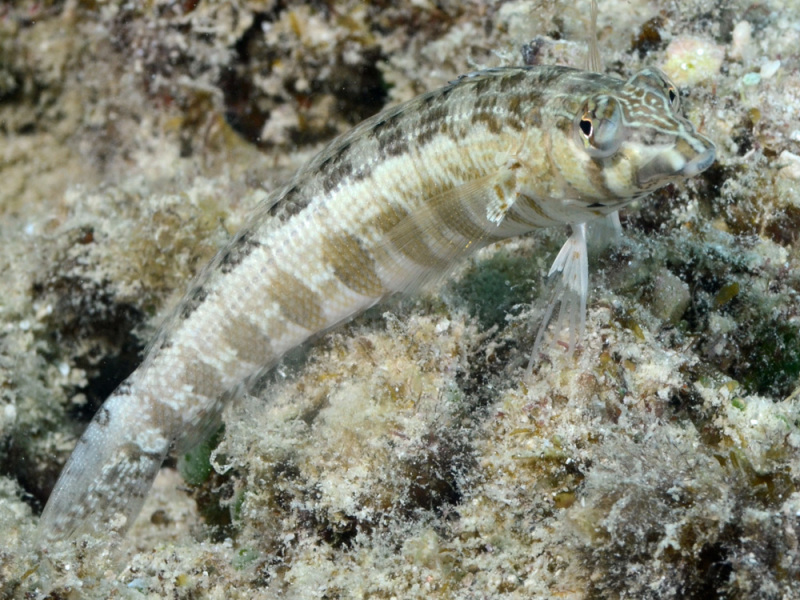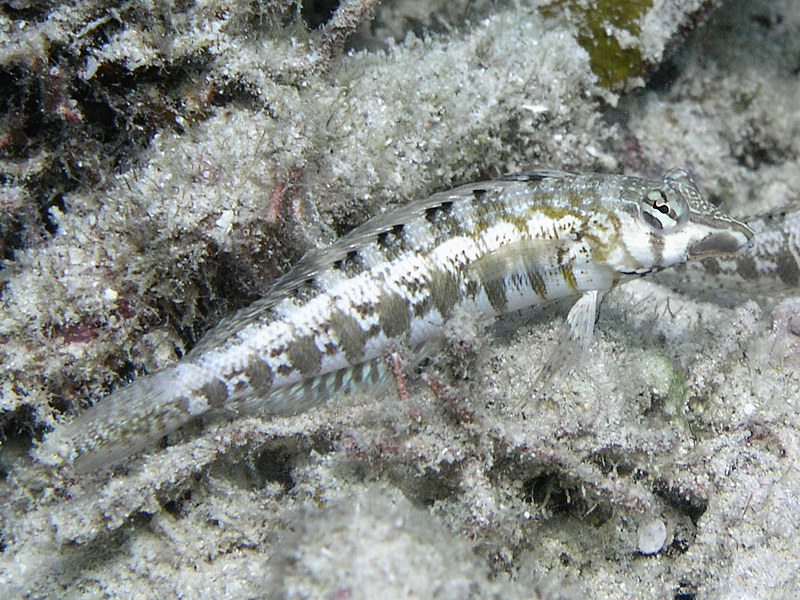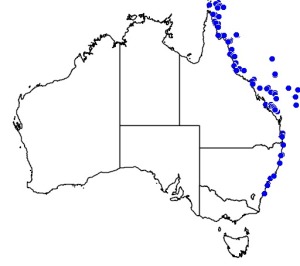Colours
Distinguishing features
A small and elongate bottom dwelling fish with a whitish-grey body, and a series of dark brown blotches running along the flank. The vertical stripe directly underneath the eye is a diagnostic feature.
Size
- Up to 10 cm (length according to Fishes of Australia website accessed 12 Mar 2019, link below)
Depth range
- Depth range data is not yet available.
Synonyms
Similar taxa
-
Animalia:
species: Parapercis cylindrica
This name has been misapplied to GBR specimens (Fishbase and Fishes of Australia accessed 17 Feb 2017). The name is valid but the species is not found on the GBR.
Distribution
Distribution and habitat preferences
Areas of rubble and seagrass adjacent to coral reef areas, most common in sheltered lagoonal habitats.
Can be found in most sheltered locations around the island.
Behaviour
The Sharpnose Grubfish is a benthic carnivore, taking crustaceans, worms and other invertebrates from the rubble areas that it inhabits. This species is a short-lived (maximum age at Lizard Island 411 days) haremic protogynous hermaphrodite. Males maintain a harem of 2-10 females and mating occurs daily throughout the year, just before dark. The growth rate of these fishes accelerates immediately after the transition from female to male. Females have territories which they defend from other females, whereas the male territory encompasses all of the females in the harem.
Web resources
References
- Caley, M.J. (1991). Mechanisms of coexistence in communities of coral-reef fishes, Ph.D. thesis, University of Sydney. LIRS catalog number 307.
- Caley, M.J. (1995). Community dynamics of tropical reef fishes: local patterns between latitudes, Marine Ecology Progress Series, 129: 7-18. LIRS catalog number 447.
- Caley, M.J. and J. St John (1996). Refuge availability structures assemblages of tropical reef fishes, Journal of Animal Ecology, 65: 414-428. LIRS catalog number 458.
- View all references






